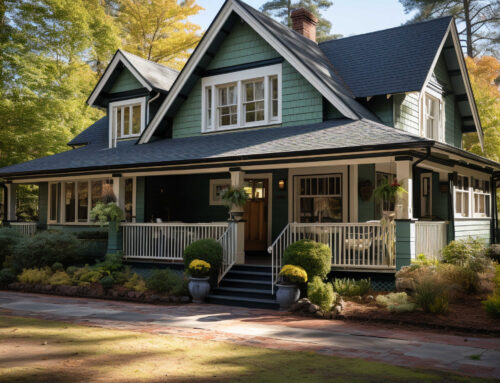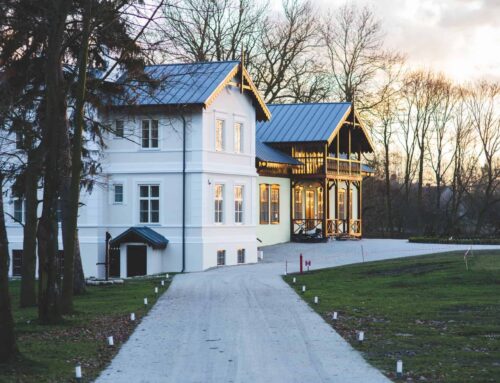Vacant Homes Tax Ordinance: What San Francisco Investors and Homeowners Need to Know
Learn what this ordinance means and its impact on investors and homeowners. While the San Francisco real estate market is competitive, it’s hard to imagine that several residential units are unoccupied within the city. If we take a closer look, there are several reasons why homeowners and landlords keep their units vacant. For example, landlords who want to sell their buildings often leave units empty when tenants move out because they believe that empty units would sell for a higher price than ones with tenants still living in them.
Census data from January 2022 shows that the number of vacant units in San Francisco grew by about 20% between 2015 and 2019, reaching 40,500 units in 2019. This shortage of housing compared to available units was the reason for the approval of the Empty Homes Tax Ordinance.
What is an Empty Homes Tax Ordinance?
The Empty Homes Tax Ordinance is designed to disincentivize homeowners from keeping units empty for long periods, which will increase available housing and generate money for rent subsidies. However, not all properties are affected by this law. For example, single-family homes, duplexes, and buildings with two or fewer units are exempt.
People who own a condo, loft, TIC, or any building with 3 or more units must file their annual tax with the city as directed by the tax collector. Otherwise, it will be considered that their unit was vacant, and they will be taxed. It’s important to be careful when filing taxes to avoid penalties. This law starts in January 2024 and will be in effect until December 2053.
How much is the tax penalty for vacant homes?
Under the Empty Homes Tax Ordinance, a property is considered vacant if not lived in for more than 182 days, whether in a row or spread out over the year. So, if you own multiple units, whether in a high-rise condo or a 3-story Victorian house in the Bay Area, you must live in your property for at least 182 days. If not, it will be classified as a vacant home.
Under the new ordinance, vacant homes are subject to tax penalties. The tax rates depend on two factors: (1) the size of the property and (2) how many years it has been vacant. Here are the tax rates for properties based on their size:
- Properties less than 1,000 sq. ft.:
- 1st year: $2,500
- 2nd year: $5,000
- 3rd year: $10,000
- Properties between 1,000 and 2,000 sq. ft.:
- 1st year: $3,500
- 2nd year: $7,000
- 3rd year: $14,000
- Properties over 2,000 sq. ft.:
- 1st year: $5,000
- 2nd year: $10,000
- 3rd year: $20,000
These tax rates apply if your property is vacant for the entire 3-year period from 2024 to 2026. If your property is occupied in the 1st year (2024) but becomes vacant in the 2nd year (2025), you will be charged the first-year rate. The same applies if it is vacant only in the 3rd year (2026). The rate for the year it first became vacant will be used to calculate the tax.
Keep in mind that the rates mentioned above are adjusted each year based on the Consumer Price Index (CPI). Homeowners should make sure to review the tax details regularly under this ordinance.
Property exemptions under the Empty Homes Tax Ordinance
In addition to single-family homes, duplexes, and two-unit buildings, several other types of properties are exempt from the vacant homes ordinance. These include:
-
Primary Residences
: Homes where the owner lives full-time. These properties are exempt from the Empty Homes Tax because they are the owner’s main living space.
-
Units Meant for Travelers or Short-Term Guests
: Properties intended for temporary stays, such as vacation rentals or guest houses. These units are excluded from the tax as they are used frequently for short-term accommodations.
-
Properties Owned by Nonprofit Organizations or Government Agencies
: Buildings owned by nonprofits or government entities. These properties are exempt because they serve public or community purposes and are not intended for profit.
There are also specific situations where tax penalties for vacant homes do not apply. These include:
-
Vacancy Caused by Applying for a Building Permit
: Includes situations where the property is vacant while applying for permits needed for repairs, renovations, or construction. This allows time to complete work without incurring tax penalties.,
-
Vacancy Due to a City-Issued Building Permit
: Covers properties that are vacant because the city has issued a permit for repairs, restoration, or construction. This prevents tax penalties during the official approval and work process.
-
Vacancy Resulting from a Natural Disaster
: Applies to properties that are vacant due to severe damage from a natural disaster, such as hurricanes, earthquakes, or wildfires. This exception acknowledges the difficulties of recovery and provides relief from tax penalties during the repair and rebuilding process.
-
Vacancy While Waiting for a Certificate of Final Completion and Occupancy
: Pertains to properties that are vacant while awaiting a city-issued certificate confirming that repairs or construction are complete and the property is ready to be occupied. This ensures homeowners are not penalized during this waiting period.
-
Vacancy Due to the Death or Medical Absence of the Owner-Occupant
: Includes properties that are vacant because the owner-occupant has passed away or is away due to serious medical reasons, such as a prolonged illness or hospitalization. This exception recognizes personal and emotional challenges and helps ease the financial burden on the property’s heirs or caretakers.
These exemptions are designed to protect homeowners from unfair penalties. The Empty Homes Tax Ordinance recognizes that certain situations can cause unavoidable vacancies and provide relief to those affected. These provisions aim to ensure that homeowners are treated fairly and not financially burdened by factors beyond their control.
Where will the proceeds from the new ordinance go?
All the money collected from the Empty Homes Tax goes to the Housing Activation Fund. This fund helps support several important initiatives. First, it provides rental subsidies to help elderly people who are 60 or older, as well as low-income households, afford their homes. Second, the fund is used to pay for the city’s projects to repair old buildings and buy new ones for affordable housing. This way, the money not only helps those in need but also supports efforts to create more affordable housing options in the city.
We hope this resource helps you understand the Empty Homes Tax Ordinance better. If you have questions about how this new law might impact your properties or if you’re thinking about selling or renting homes in San Francisco, don’t hesitate to reach out. We’re here to provide guidance and support every step of the way. Contact us today for more information or assistance!




